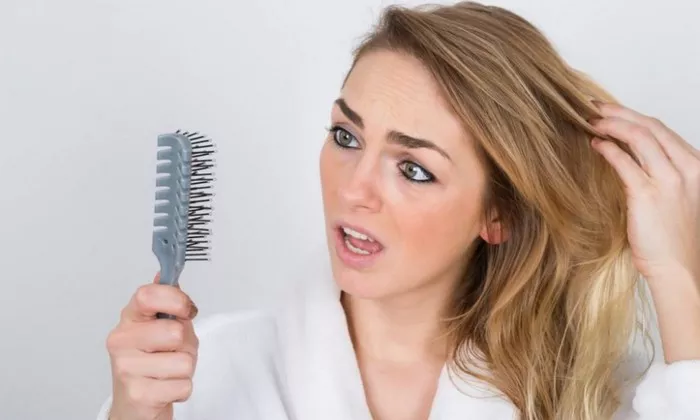Alopecia areata can be a distressing condition, causing hair loss in localized patches on the scalp or other parts of the body. The term “spreading alopecia areata” refers to the condition’s tendency to expand, affecting larger areas over time. In this comprehensive guide, we will explore strategies and tips to prevent the spreading of alopecia areata. With the right approach, you can take control of your hair loss and regain your confidence.
1. Understanding Spreading Alopecia Areata
Before diving into solutions, it’s crucial to grasp the basics of alopecia areata and why it tends to spread. Alopecia areata is an autoimmune condition in which the body’s immune system mistakenly attacks hair follicles, leading to hair loss. Spreading alopecia occurs when the autoimmune response intensifies, affecting a larger portion of the scalp or body.
a. Immune System Function: Understanding how the immune system works and identifying the triggers for its overactivity can be key to managing alopecia areata.
b. Patterns of Spreading: Knowing the typical patterns of alopecia areata progression can help you monitor and address the condition effectively.
c. Impact on Mental Health: Recognize the emotional toll alopecia areata can take and its effects on self-esteem. A positive mindset is essential.
See Also: 6 Chemicals Cause Hair Loss: A Comprehensive Guide
2. Medical Interventions for Alopecia Areata
Managing alopecia areata often requires medical interventions to slow down or halt the spread of hair loss. Consider the following treatment options:
a. Topical Corticosteroids: These medications can be applied directly to the affected areas to reduce inflammation and immune system activity.
b. Intralesional Corticosteroid Injections: Administered by a dermatologist, these injections can target specific alopecia patches, reducing inflammation.
c. Topical Immunotherapy: This treatment stimulates an allergic reaction in the affected area, redirecting the immune system’s focus away from hair follicles.
d. Oral Medications: Some cases may require oral corticosteroids, immunosuppressants, or JAK inhibitors, which modulate the immune response.
3. Lifestyle Adjustments to Manage Alopecia Areata
In addition to medical interventions, certain lifestyle changes can contribute to controlling the spreading of alopecia areata. Consider the following:
a. Stress Reduction: Stress can exacerbate autoimmune conditions. Engage in relaxation techniques like yoga, meditation, or mindfulness.
b. Balanced Diet: A diet rich in vitamins and minerals, especially those promoting hair growth, can be beneficial. Foods containing biotin, zinc, and iron are essential.
c. Gentle Hair Care: Avoid aggressive styling, tight hairstyles, and excessive heat treatment, which can damage hair follicles further.
d. Regular Exercise: Physical activity improves circulation and supports overall health, potentially aiding in controlling alopecia areata.
4. DIY Approaches for Managing Alopecia Areata
While medical treatments are essential, there are also some do-it-yourself (DIY) strategies that can complement professional interventions:
a. Scalp Massage: Gentle massages can improve blood flow to the scalp, potentially promoting hair growth.
b. Essential Oils: Some essential oils, such as lavender and rosemary, have shown promise in managing alopecia areata when used topically.
c. Wearing Wigs or Hairpieces: For those dealing with more extensive hair loss, wigs or hairpieces can help maintain a natural appearance.
5. Monitoring Progress and Seeking Professional Guidance
A crucial aspect of managing spreading alopecia areata is to continually monitor your progress. Document changes in hair loss patterns, keep track of treatment effectiveness, and consult a dermatologist regularly. They can adjust your treatment plan as necessary and offer valuable insights.
a. Progress Tracking: Maintain a diary or take photos to document the changes in your condition, helping both you and your doctor to gauge effectiveness.
b. Dermatologist Consultation: Schedule regular check-ups with a dermatologist to ensure you are receiving the most appropriate care.
6. Finding Support and Building Confidence
Dealing with spreading alopecia areata can be emotionally challenging, impacting self-esteem and mental health. Seek support from family, friends, or support groups, and consider professional counseling or therapy to cope with the emotional aspects.
a. Support Systems: Lean on your support network for understanding and encouragement throughout your journey.
b. Confidence Building: Experiment with different hairstyles, wigs, or headscarves to boost your self-confidence during the treatment process.
In conclusion
Spreading alopecia areata can be a complex and challenging condition, but it’s not insurmountable. By understanding the condition, seeking appropriate medical treatments, making lifestyle adjustments, and monitoring your progress, you can take control of your hair loss. Additionally, don’t underestimate the power of support and confidence-building strategies to help you navigate the emotional aspects of alopecia areata. Remember that with the right approach, you can effectively manage and stop the spread of this condition, ultimately regaining your self-assurance and a fuller head of hair.


